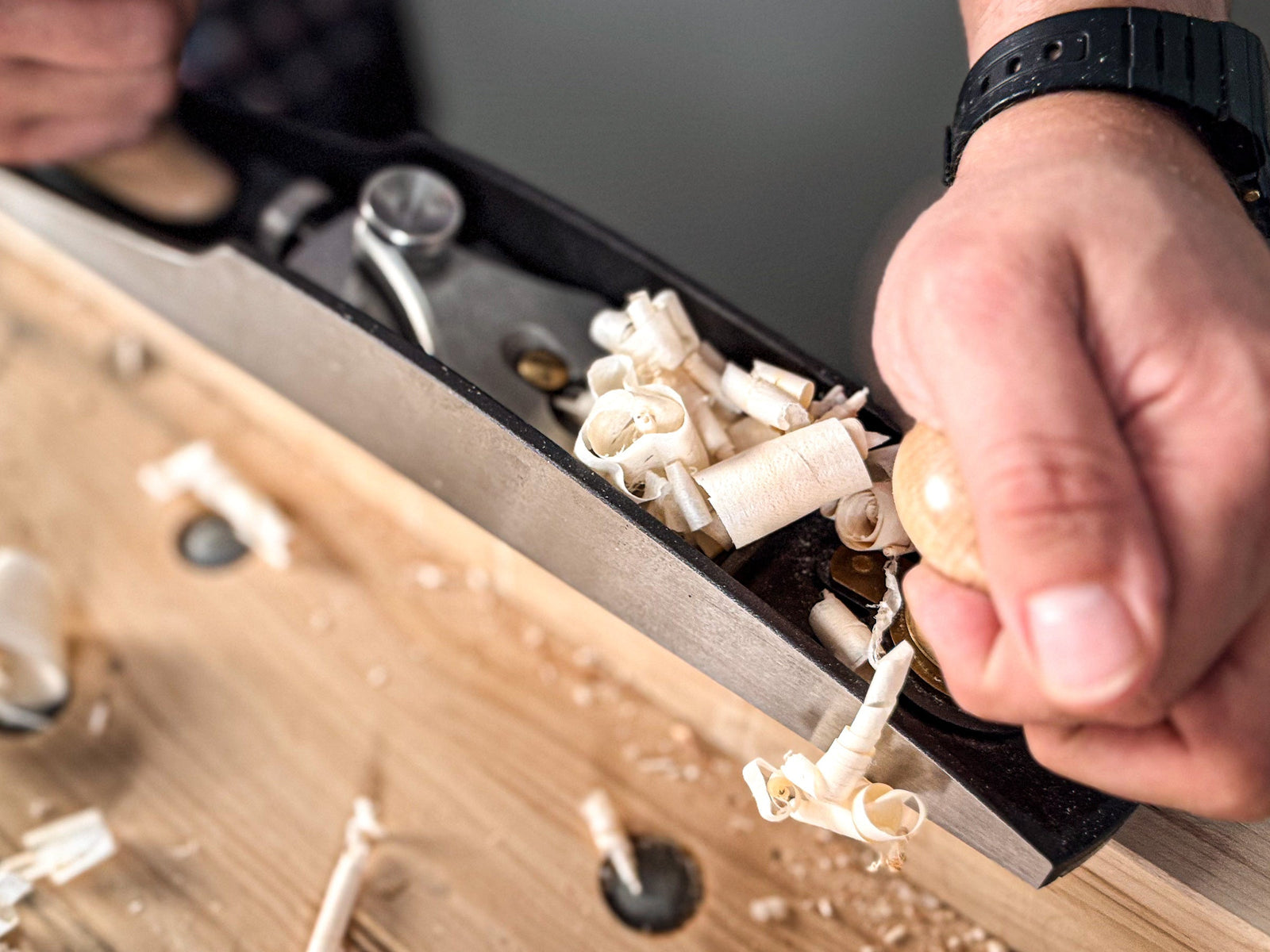You’re all set up to start planing the first board for your next project. You rest the toe of your plane on the near side of the board, and begin pushing it forward, gathering momentum and then… that vibrating, skipping sensation hits as the plane starts chattering. The surface is left rippled and rough, and the smooth glide you expected feels like it’s gone off the rails.
The good news? Plane chatter is nearly always fixable with a bit of adjustment. Here are five simple fixes to keep your plane humming and your timber silky-smooth.
1. Sharpen the Blade – Seriously Sharp
Most chatter issues start with a dull blade. A blunt iron doesn’t slice—it skips, tears, and vibrates. Low-angle planes thrive on fine, precise cuts, and that means the edge has to be razor sharp.

2. Set a Shallower Cutting Depth
Over-aggressive cuts are a fast track to chatter. If the blade sticks out too far, it bites too deep—and the plane starts bouncing. Back the blade off completely, then advance it in small turns until it just starts to cut fine, translucent shavings. As your confidence grows you can increase the depth of cut.

3. Tighten the Lever Cap
If your blade isn’t held firmly, it’ll move and vibrate under pressure. On low-angle planes, the lever cap clamps everything in place. If it’s loose, you’ll have movement—and movement = chatter.
There’s no need to overdo it though, just a quarter-turn or so of the thumb screw after the slack is taken up should be enough.

4. Lubricate the Sole
If the sole of your Low-angle plane doesn’t glide smoothly across the timber, it can lead to all sorts of problems when planing.
Use a mineral oil or paste wax to lubricate the sole of your plane (avoid anything containing silicones – they will mess with your finish) with a rag. A little goes a long way, and be careful not to cut yourself on the blade.
Waxing the sole (and cheeks) of your plane is a good habit to get into to prevent rust as well.

5. Improve Your Technique
Even a tuned-up plane can chatter with poor technique. Keep steady pressure on the toe at the start of your stroke, shifting it to the heel as you finish. This keeps the plane’s sole flat against the wood the whole time.
Make sure your workpiece is clamped firmly—if the wood shifts, the blade will stutter. Also, watch your grain direction. Planing against the grain or over knots can trigger chatter. When in doubt, skew the plane slightly to get a slicing cut.
Final Thoughts
Chatter’s annoying, but it’s almost always solvable. A bit of tuning and practice, and you’ll be back to taking silky, clean shavings in no time.
Low-angle planes are precision tools, and with a little TLC, they’ll reward you with buttery surfaces and the satisfying swishhh of a job well done.

